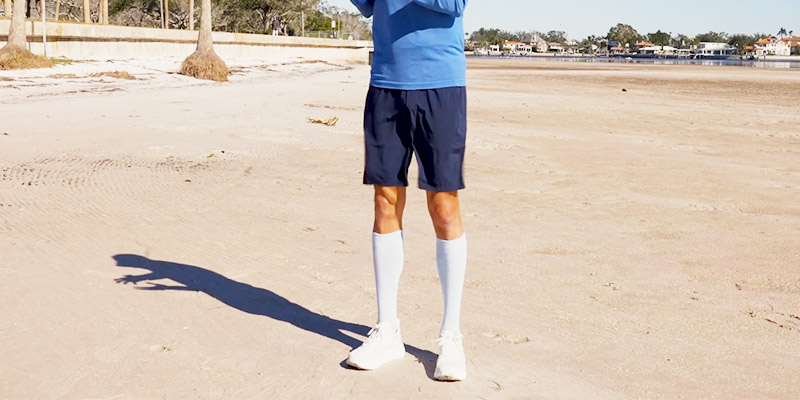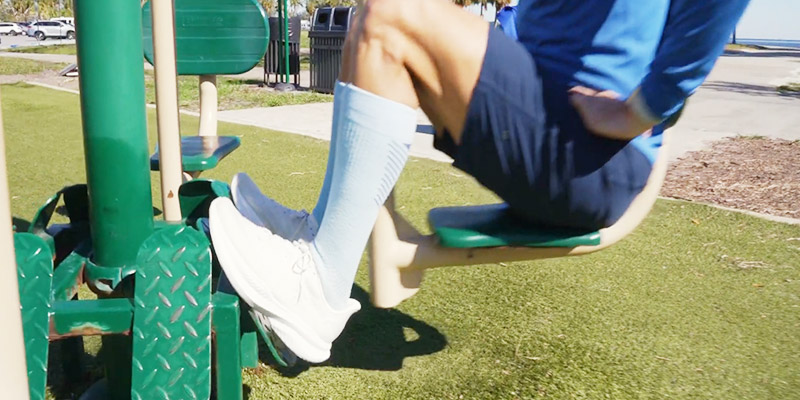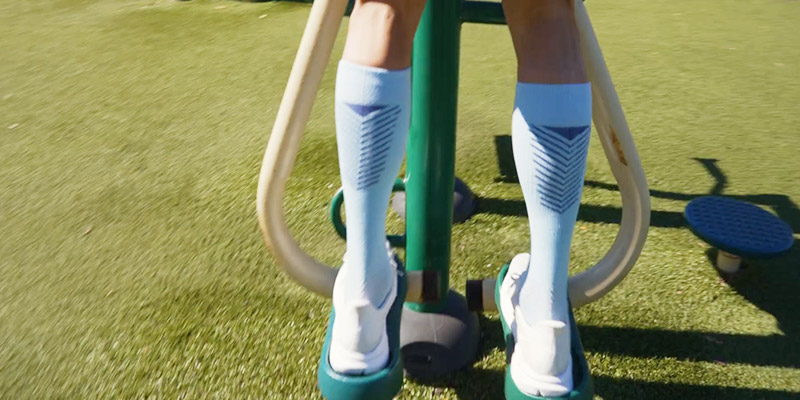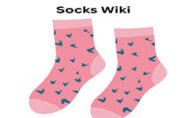Hi, I'm Christopher Bevans, the creator of SocksWiki.com. With a background in fashion design and a passion for innovation, I’m here to share my knowledge on socks from troubleshooting tips to detailed buying guides. I believe the right pair of socks can make all the difference, and through this site, I aim to help you find the perfect fit for every occasion.
Hi, I'm Christopher Bevans, the creator of SocksWiki.com. With a background in fashion design and a passion for innovation, I’m here to share my knowledge on socks from troubleshooting tips to detailed buying guides. I believe the right pair of socks can make all the difference, and through this site, I aim to help you find the perfect fit for every occasion.
Yes, you can exercise in compression socks. They improve circulation, reduce fatigue, and support recovery during workouts.
From enhancing blood circulation to providing extra support and stability, compression socks can be a powerful addition to your workout gear.
They help deliver more oxygen to working muscles, reduce fatigue by minimizing muscle vibration, and even prevent swelling from fluid buildup.
In this post, we’ll explore why exercising in compression socks can make a noticeable difference in how you perform and recover.
Benefits of Wearing Compression Socks During Exercise

Wearing compression socks during workouts isn’t just a trend, it’s backed by both science and athlete experience. Whether you’re running, cycling, lifting weights, or walking for long periods, compression socks can enhance comfort, reduce fatigue, and support overall performance.
Here are some of the top benefits:
Improved Blood Circulation

Compression socks apply gentle, graduated pressure to the legs, which helps promote better blood flow back to the heart.
During exercise, this can improve oxygen delivery to muscles, reduce strain on the cardiovascular system, and help you train longer without feeling as tired.
Reduced Muscle Fatigue
By stabilizing the muscles and reducing micro-vibrations with each movement, compression socks can help delay muscle fatigue.
Less shaking means less energy wasted and fewer muscle tears, leading to improved endurance, especially during high-impact or long-duration activities.
Faster Recovery Time
Compression socks are known to help clear out metabolic waste like lactic acid more efficiently. This may lead to quicker recovery after intense exercise. Some athletes even wear them post-workout to help reduce soreness and swelling.
Swelling and Inflammation Control
If your legs or ankles tend to swell during or after workouts, compression socks can help. The pressure prevents fluid buildup in the lower legs, especially helpful during long-distance running, standing workouts, or travel after training.
Muscle Support and Stability
Compression socks act as an external support system for your lower leg muscles, particularly the calves. This extra support can help reduce the risk of muscle strain, cramps, or shin splints during strenuous activity.
Temperature Regulation and Comfort
Many modern compression socks are made with moisture-wicking and breathable fabric. This helps regulate temperature, keep sweat at bay, and prevent blisters, making your workout more comfortable overall.
Injury Prevention
By supporting the muscles, joints, and veins in your lower legs, compression socks can help lower the risk of overuse injuries. They’re especially beneficial for athletes recovering from injury or prone to leg fatigue and pain.
Better Performance (Psychological Boost)
Some athletes report feeling more confident and focused while wearing compression socks, knowing they’re reducing the risk of pain or fatigue. This psychological edge can translate into real performance improvements.
Exercises You Can Do Using Compression Socks

Compression socks aren’t just for recovery or long flights; they’re becoming a popular part of activewear for athletes and fitness enthusiasts alike. But what types of exercises actually benefit from wearing them?
Here’s a breakdown of exercises you can do using compression socks, and how these high-performance garments can enhance each workout:
Running and Jogging
Whether you’re a long-distance runner or prefer short jogs, compression socks can help improve blood flow, reduce calf fatigue, and prevent swelling. They also support the lower legs, minimizing the risk of shin splints and muscle soreness.
Walking and Hiking
Even low-impact activities like brisk walking or hiking can cause leg fatigue over time. Compression socks help reduce swelling, improve circulation, and keep your legs feeling fresh on long treks or daily walks.
Cycling
Cyclists benefit from the improved circulation and reduced lactic acid buildup that compression socks provide. They also help support calf muscles during intense pedaling, which can reduce fatigue and cramping on long rides.
Weightlifting and Strength Training
While lifting weights, compression socks offer muscle support and may improve balance and stability. They also reduce muscle vibration during heavy lifts like squats or deadlifts, helping minimize fatigue and the risk of strain.
HIIT and CrossFit
High-Intensity Interval Training (HIIT) involves rapid movements and intense cardio bursts. Compression socks keep your muscles supported, reduce vibration, and help control swelling during these explosive workouts.
Aerobics and Dance Workouts
Cardio-focused workouts like Zumba, dance fitness, or step aerobics involve lots of footwork and calf engagement. Compression socks help reduce the impact on lower legs and ankles, enhancing comfort and reducing post-workout soreness.
Team Sports (Soccer, Basketball, etc.)
Athletes in high-impact sports often wear compression socks for performance and protection. They help keep legs energized, improve endurance, and protect against minor injuries caused by sudden stops or direction changes.
Yoga and Pilates
While not traditionally high-impact, yoga and Pilates can involve extended time on your feet or lower body holds. Light compression can improve circulation and offer subtle muscle support, especially in standing poses or balance exercises.
Treadmill and Indoor Cardio Workouts
Even indoor workouts like treadmill runs, jump rope, or stair climbing can benefit from compression socks. They help prevent fatigue, control sweat, and reduce discomfort from repetitive motion.
Post-Workout Cool-Downs
Wearing compression socks after exercising, during your stretching or cooldown routine, can speed up recovery by promoting blood flow and reducing inflammation.
Frequently Asked Questions:
Do You Wear Compression Socks While Running or After?
Yes. You can wear compression socks both while running to improve circulation and after running to support faster recovery.
Can You Exercise in Compression Socks While?
Yes. You can exercise in compression socks while working out, because they help improve blood flow, reduce muscle fatigue, and support performance.
How Long to Wear Compression Socks After Running?
You should wear compression socks for 1 to 4 hours after running to reduce swelling and support faster muscle recovery.

Hi, I'm Christopher Bevans, the creator of SocksWiki.com. With a background in fashion design and a passion for innovation, I’m here to share my knowledge on socks from troubleshooting tips to detailed buying guides. I believe the right pair of socks can make all the difference, and through this site, I aim to help you find the perfect fit for every occasion.
- Latest Posts by Christopher Bevans
-
What Socks to Wear With Cowboy Boots?
- -
Grip Socks vs Regular Socks: Which One Should Wear?
- -
Are White or Black Socks Better: Comfort, Style, and Function
- All Posts


